As a devoted wine enthusiast, seasoned traveler, and resident of Croatia for the past decade, I am excited to present my insider’s essential guide to Croatian wineries. This guide, enriched by my extensive experience, includes over 50 wineries and their must-try wines.
Having immersed myself in numerous Croatian wine courses and visited these regions annually, you may say that I have become a bit of a wine connoisseur. My wife says I drink too much, but either way, I have curated a list that captures the essence of our wine-rich country, focusing on the best wine regions in Croatia.
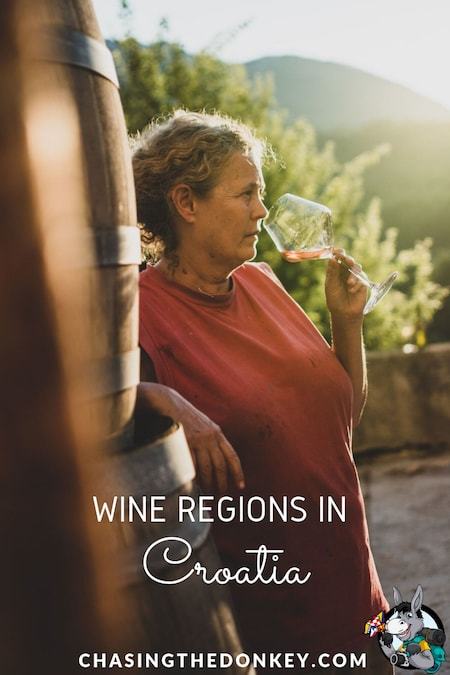
Skip Ahead To My Advice Here!
Must-Visit Croatian Wineries
If you’re all about good food and wine, the Mediterranean is your go-to spot. It’s got the perfect mix of warm weather and sun, plus that stunning sea, making it ideal for some serious culinary adventures.
Now, let’s talk wine. Sure, you’ve got your classic French and Italian wines, maybe even some Spanish or Portuguese ones on your radar.
But let me clue you in on Croatia. This place might be small, but its wines pack a punch. We’re talking about a long tradition of winemaking, unique grapes, and flavors that’ll blow your mind.
When you’re cruising through Croatia, keep an eye out for their local wineries – they’re the real deal.
Croatian Wine History And Geography
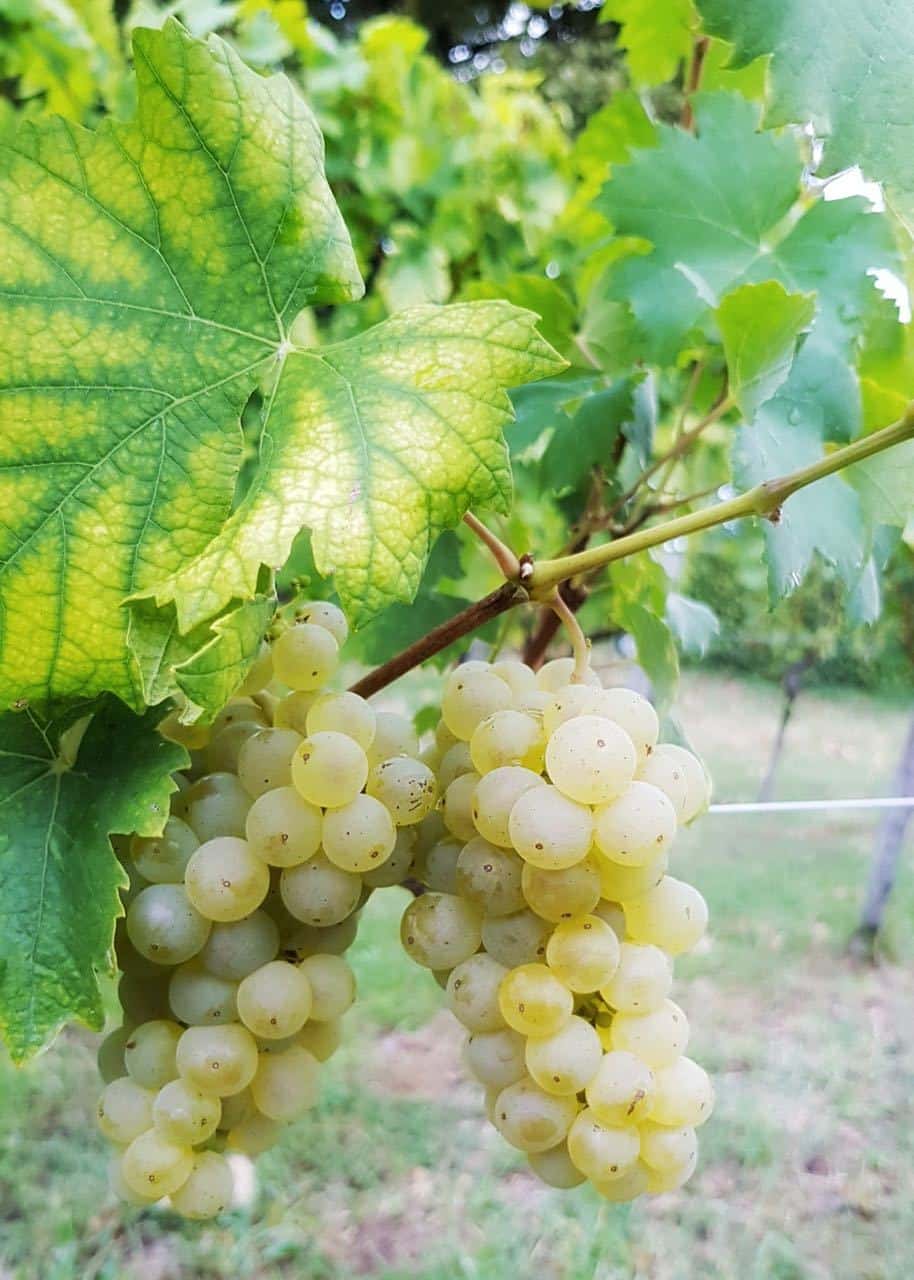
Before we jump into the wines, let’s scope out where they’re coming from in Croatia.
We’ve got two rockstar regions here: Istria and Dalmatia. Both have this killer climate for grapes, and they’ve been at this wine game since the Romans and Ancient Greeks were around.
Istria, or Istra, is that incredible, triangle-shaped peninsula up north on the map. It’s got this Italian vibe and is dotted with incredible little towns that are perfect for a wine tour. Seriously, you can’t swing a bat without hitting a great winery here.
Then you’ve got Dalmatia, further south past the Velebit mountains. This place is island central, and these islands are like treasure troves of fantastic vineyards pumping out some top-notch wines.
If you’re into wine, both spots are like hitting the jackpot. But now, let’s dig into the main event – the best Croatian wines. Buckle up because there’s a whole lot of good stuff to cover.
Best Wineries In Croatia Map
Must-Visit Wineries In Istria & Kvarner
The northwestern peninsula of Croatia is famous for its picturesque coastal towns and hilltop villages. Istria’s rolling hills and meandering coastline create a wide array of microclimates, allowing for the production of a variety of wines.
It’s also one of the country’s culinary hotspots, its cuisine featuring local truffles, seafood, olive oils, and wines.
In terms of viticulture, this beautiful part of Croatia is known for its Malvazija Istarska grape and excellent soils for growing famous red grape varieties, such as merlot and cabernet sauvignon. Istria also has its very own red varieties, known as teran and refošk. Excellent local white wines include yellow muscat and sparkling wines.
1. Damjanić Winery, Poreč
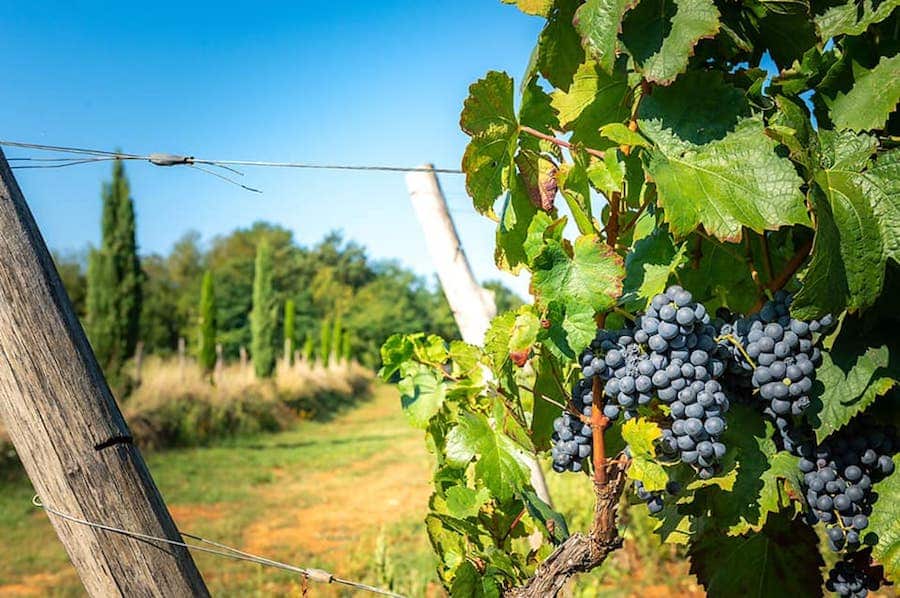
Our trip through Istria will start in Poreč. On the outskirts of that town, you can find the Damjanić winery.
This is a great place to start this tour of Istrian wines. You see, not only has the Damjanić family been producing wine since the 18th century, but they also produce some of the best wines around today.
This was confirmed with two gold medals from the International Wine Challenge – one for their Malvasia from 2016 and one for their Clemente Blanc from 2015.
It should be mentioned that Malvasia is the grape variety characteristic of this part of Croatia, so if you really want something authentic, this is the wine you will want to get your hands on.
Without a doubt, Damjanić’s product is among the very best you can find, but there are more great wineries worthy of your attention, so let’s move on.
2. Agrolaguna, Poreč
Poreč is also the headquarters of Agrolaguna, a company dedicated to creating olive oils, wines, and other similar products.
This entry on our list stands out in that it is not a small family-owned winery, but its wines nevertheless deserve to be mentioned. Their Laguna brand comes in three different categories, with Festigia Riserva being the very best of them, so pay attention to it.
Malvasia Vižinada 2016 is a part of that label, and it has recently won a gold medal at the 2019 Mundus Vini. Cabernet Sauvignon from that same label has also received a lot of praise.
So, if you’re not close to a winery but would still like to get yourself something good from the local supermarket, Laguna wines should be your choice.
3. Matošević Winery
The Matošević winery is located in the small village of Krunčići, Istria. The winery’s most famous wines are the Malvasia and the Chardonnay, but the Grimalda Red, a blend made from Merlot and Teran, is also worth mentioning.
One version of Malvasia, the Malvasia Istarska, which is native to Istria, is used for their wines, like the Alba, Alba Barique, and Alba Antiqua. One of their peculiarities is that they age their white wines in acacia wood instead of the more common oak barrel.
The owner, Ivica Matošević, is also the president of the Vinistra, the Association of Istrian winegrowers and winemakers.
Visit between 9 a.m. to 4 p.m.
Facebook | Krunčići 2, 52448 Sv. Lovreč | contact | +385 (0) 52 448 558
4. Cossetto Winery, Village Of Broskvari
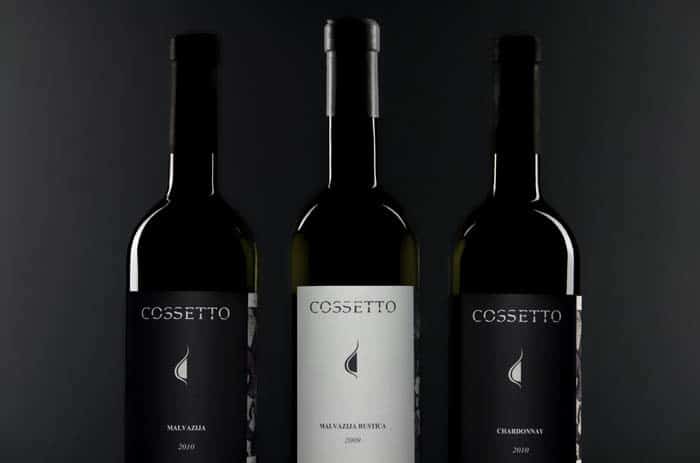
Since we have already broached the subject of Malvasia, we really need to point you to the tiny village of Broskvari near the town of Višnjan (home of Brist Olive Oil).
Yes, we’re going back to small wineries now – you will find the Cossetto winery there, and their Prima Luce from 2017 has won so many awards that some Croatian media have already christened it as “the best Malvasia in the world.” It’s genuinely spectacular, Malvasia!
Indeed, this wine has won numerous recognitions in Croatia and worldwide, but the Cossetto family also produces their own chardonnay. As for red wines, they offer a robust Cabernet Sauvignon and Mozaik, a blend of that same Cabernet Sauvignon, Merlot, and the variety known as Borgonja.
The latter is very similar to the French Gamay. Still, it is considered an authentic Istrian variety, which means Mozaik Cossetto will give you a great idea of what Istria is all about.
5. Clai Winery, Grožnjan
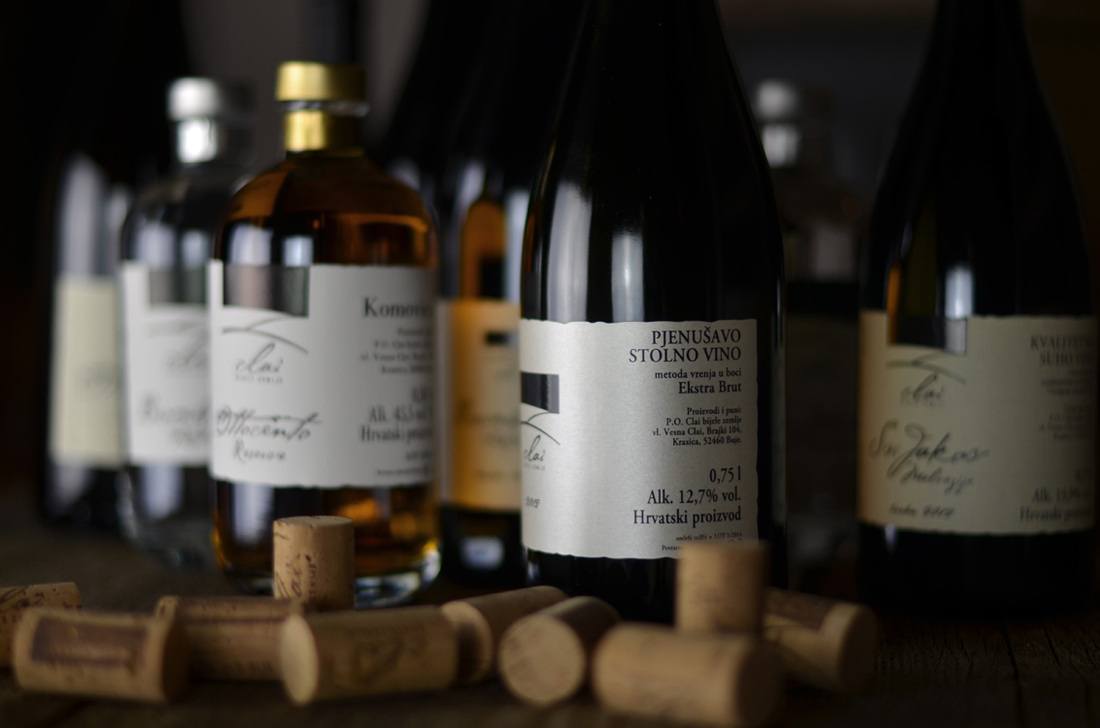
The Clai winery also has to be mentioned here. This is primarily because of its Sveti Jakov wine, an orange wine made of Malvasia, which has been recognized as one of the world’s best orange wines.
However, this winery has a lot of other excellent products: their Brombonero is an absolutely sensational red wine (100% refosco), and red and white Ottocentos combines an array of varieties for some outstanding results too.
So, come for Sveti Jakov; stay for everything else.
You will find this winery near Grožnjan, to the northwest of Istria. The hosts are incredibly welcoming and are always willing to discuss wine with you, so if you want to get to It’s important to know the people behind the wines, especially those who cultivate the indigenous Croatian wines. from this part of the world, just come here.
Of course, tasting includes some great bites perfectly paired with every single wine, but what you get will depend on the season.
6. Trapan Winery
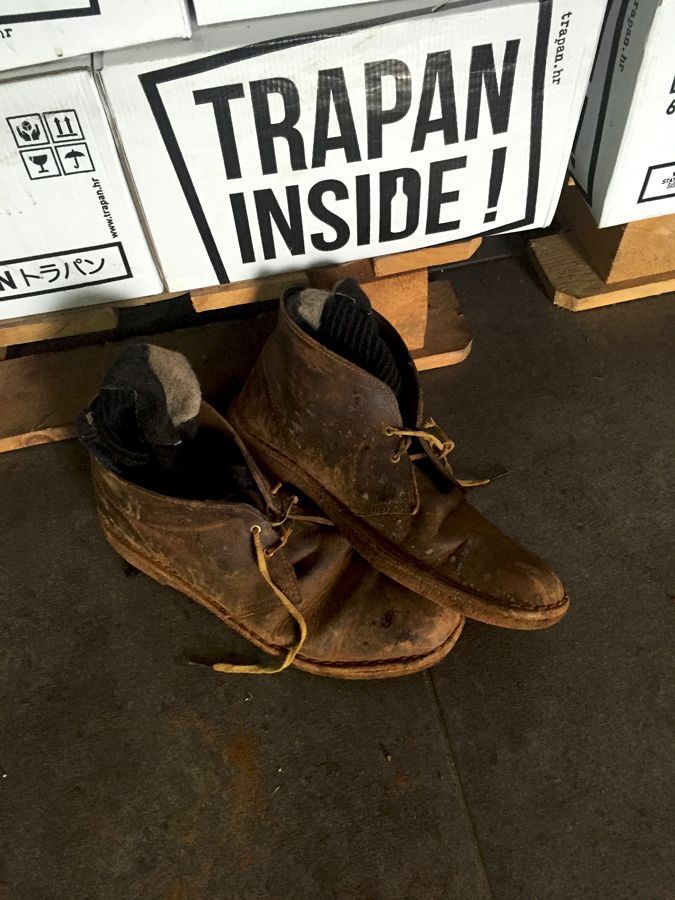
The Trapan winery is situated in the small village of Šišan on the Istrian peninsula, close to Pula. Since its start in 2005, the Trapan winery has been producing many different wines, like Malvasia, and internationally renowned red wines, such as Teran, Cabernet Sauvignon, or Syrah.
The Trapan is incredibly proud of its red blend, called Nigra Virgo Revolution, made of cabernet sauvignon, merlot, syrah, and Teran.
Their other famous wine, named Che, is a rosé sparkling wine, which is considered to be revolutionary in the Trapan winery.
At Bruno Trapan’s Wine Station, you can have a taste of these wines in a remarkable atmosphere.
Open 9 a.m. to 4 p.m., by appointment only.
Giordano Dobran 63, Sisan, 52100 Pula |+385 (0) 98 244 457
7. Kabola Winery, Momjan
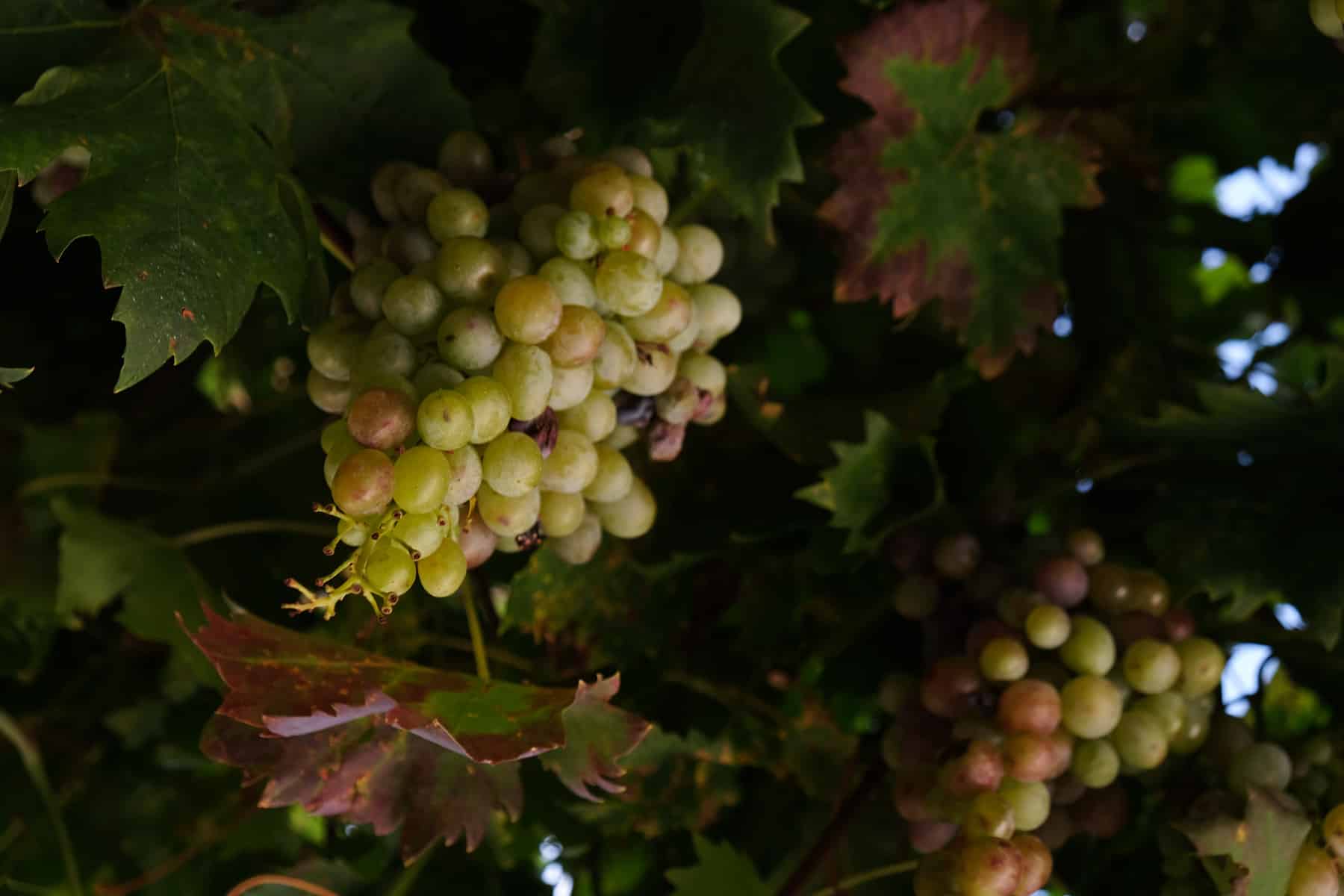
The Kabola Winery is in Momjan, in the northwestern part of Istria, not far from Buje, in a territory so much resembling a new Tuscany. Probably the most peculiar wine of the winery, the Malvasia Amphora is aged in a terracotta amphora buried in the ground.
Its Momjan Muscat is similarly unique, which is produced from an indigenous grape variety of the area.
You can taste the winery’s white Malvasija, Pisak, red Teran, Cabernet Sauvignon, Merlot, or its rosé in its wood-beamed tasting room.
English-speaking staff, a small wine museum, and a wine shop are at your disposal. In addition to wines, Kabola also makes olive oil.
Open 10:00 – 18:00 Mon to Sat
Facebook | Kanedolo 90, 52462 Momjan, Istria | +385 (0) 52 779 208
8. Prelac, Momjan
The Prelac family winery was established 20 years ago and has succeeded in producing premium autochthonous wines such as Malvazija, Refošk-Refosco, and Momjanski Muškat-Momjan Muscat, as well as sparkling wine.
The meticulously gathered, and hand-picked grapes have been transformed into their own impressive Refošk Rose.
9. Vina Fakin, Motovun
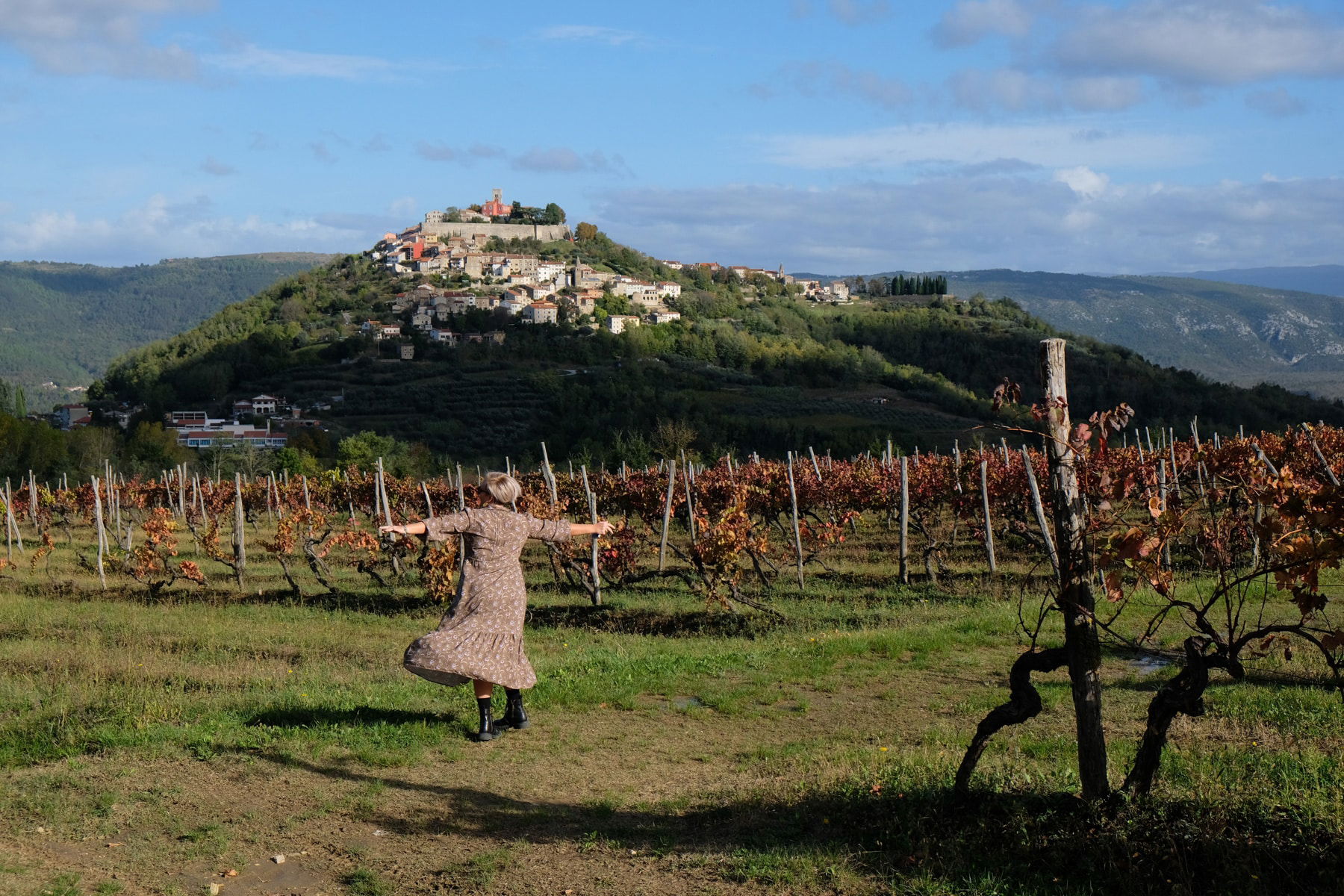
Fakin good wines!
Marko Fakin is a young winemaker from Motovun who seems destined for greatness in the Croatian wine world and beyond. He has already won numerous awards and recognition and gold and silver medals at the Decanter Awards.
More than half of his production of 75,000 bottles is Malvasia, and his Malvasia La Prima from 2016 and especially 2015 were a huge hit, with the latter winning Decanter’s gold medal.
The other big thing from this winery are their Terranos, under the label Il Primo. Rich and macerated for at least three months, they will pleasantly surprise you with their freshness and purity.
Not a big surprise there, given that Fakin’s vineyards’ location is considered to be among the best in the country. Add to that the fact that the prices are extremely affordable, and you get the ultimate value when it comes to Istrian wines.
You will find this winery in Motovun, a wonderful little town, so combine the two for an unforgettable day trip. Or even a vacation, why not?
10. TOMAZ Winery, Motovun
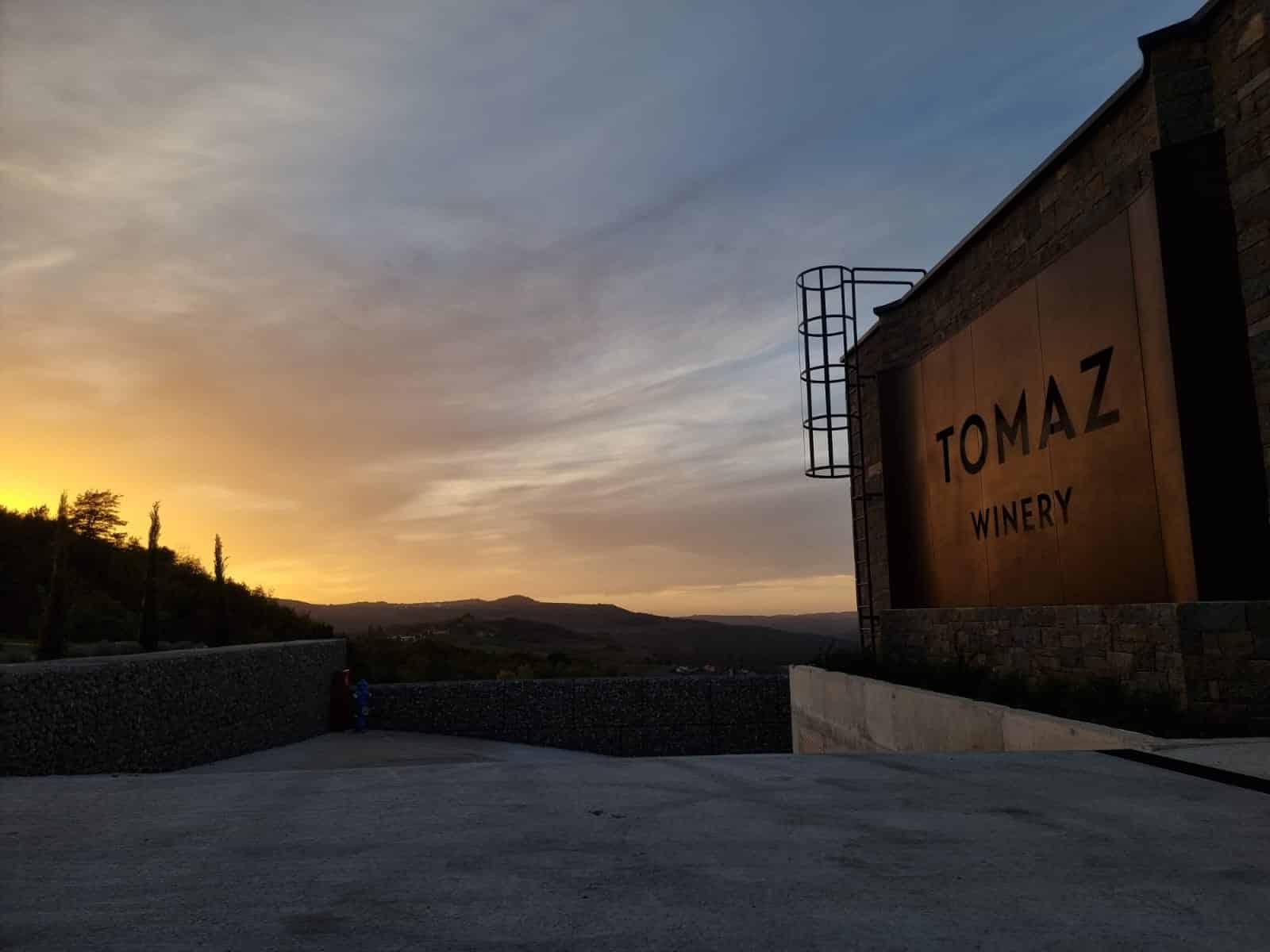
The Tomaz winery is situated at the foot of the small town of Motovun, where they primarily cultivate the Istrian Malvazija, as well as Teran and Muscat. Merlot stands out among international labels, while Teran is used to make Rosè and sparkling wine.
The Tomaz family’s wines benefit from micro-climate conditions that combine Mediterranean and continental climates. This influences a large difference in temperature between day and night, which benefits the grape ripening quality and enhances the wine with an intense aromatic flavor.

While you are there, get a tasting place – they are affordable and very tasty!
11. Benvenuti Winery, Motovun
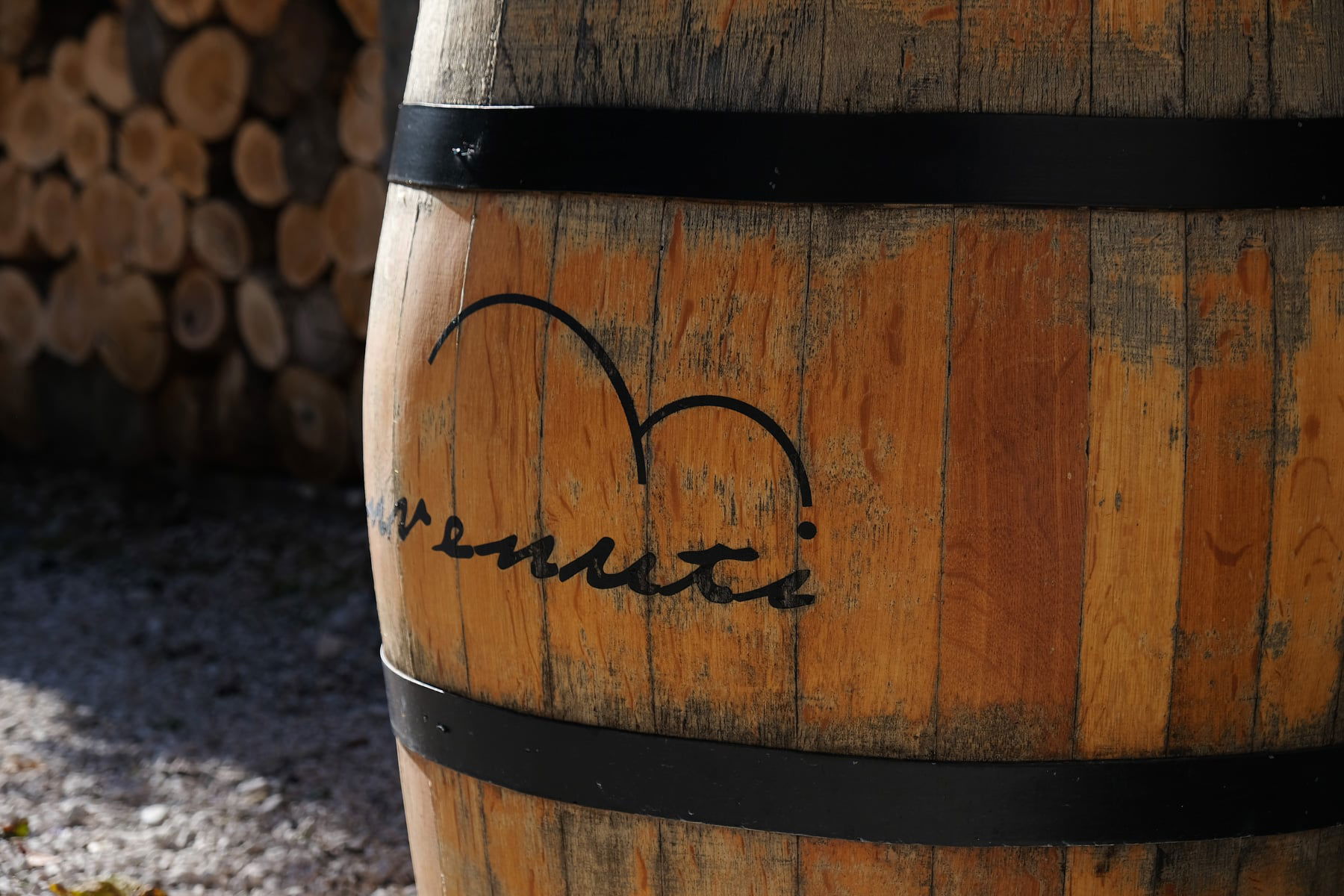
Still in Motovun, Istria, and still focusing on white wines. However, this time, we are not talking about Malvasia – no, what you also want to be on the lookout for is Istrian Muscat – the local Muscat.
The semi-sweet wine made from this variety has a mild but full and long-lasting taste, and there are a few wineries in Istria that excel at extracting the very best from every grape.
The Benvenuti winery is undoubtedly one of them since their San Salvatore 2011 won gold at London’s International Wine Challenge (their other varieties include Malvasia and Teran), so look them up if you find yourself anywhere near Motovun.
12. Roxanich Wine And Heritage Hotel, Motovun
The Roxanich winery is located in a small village, Kosinožići, close to Porec, western Istria.
Two of their most important wines are the Ines u bijelom and SuperIstrian. The former is a white blend of Verduzzo, Pinot Gris, Pinot Blanc, Sauvignon Blanc, and a few others; the latter is a red made from Merlot, Cabernet Sauvignon, and Gamay.
After skin maceration (lasting up to 174 days), three years of barrel-aging takes place. This method results in the orange character of these Croatian wines.
Roxanich has achieved many national and international awards; for example, their Merlot and Cabernet Sauvignon won gold medals at Bergamo Palamonti in 2009.
Visit by appointment only.
Twitter |Kosinožići 26, Nova Vas, Croatia | +385 (0) 91 6170 700
13. Coronica Wines, Umag
Coronica Winery was founded in 1992 by Moreno Coronica and uses the indigenous Malvazija and red Teran for its classical-style wines. The winery is located in the village of Koreniki, not far from Umag, a coastal city in Istria.
The winery has 75 acres of vineyards in the rust-colored ‘Terra Rossa’ (meaning red earth in Italian).
Three-quarters of the wine made by them are Malvazija, with one-quarter red Merlot and Teran, which is often called Terrano (in Italian). In addition to the native wines, Coronica produces a Grabar blend made of Merlot and Cabernet Sauvignon.
Visit by appointment only.
Koreniki 86, 52470 Umag-Umago | +385 (0) 52 730 357
14. Kozlovic Winery, Umag
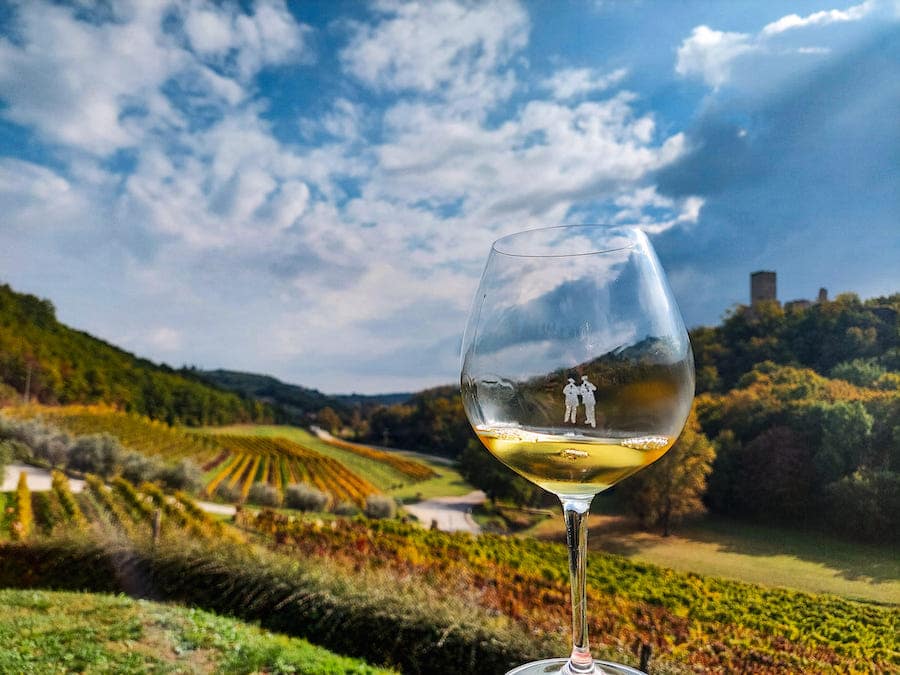
The Kozlović winery has also received recognition for its work with Istrian Muscat, so you can’t go wrong with them. They are located near Umag, to the very north of the peninsula, very close to the Slovenian border.
Kozlovic Winery is one of the most picturesque, and the service when you visit will leave you seriously impressed. This winery covers everything you could need, from small tours to full-course tasting menus.
The rolling hills around the winery are certainly Instagrammable!
Visit from 10 a.m. to 7 p.m., except Sundays and holidays.
Facebook | Vale 78, Momjan, 52460 Buje +385 (0) 992 779 177
15. Vina Deklic, Vizinada
Deklic wines are produced in the area of Vizinada, which is part of the Istrian peninsula and has always been a wine-growing district due to its excellent climate, fertile red soil, and pleasant altitude, all of which are important for the wine.
The family’s investment in terroir and effort results in wines with minerality, freshness, durability, retro flavor, and fine aroma.
16. Veralda, Brtonigla

On a plot of land measuring around 10 acres in northern Istria, Veralda Winery was founded in 1938.
Veralda has been the driving force behind advancement in the development of indigenous varieties, as demonstrated, among other things, by Teran’s sensational discovery of the first Rose, which quickly evolved into a style in the production of Istrian Rose and sparkling wine, lending Teran an elegance and an entirely new level of pairing in both an oenological and gastronomic sense.
Final Word On Istria & Kvarner Wines & Wineries
Before we move on to Dalmatia, allow us to say that apart from some truly excellent wines, wine tours of Istria are very much worth it because of the beautiful and serene landscape all around you.
This part of Croatia is primarily focused on tourism, so you can easily combine beaches and food & winetasting for the ultimate vacation.
The Mediterranean at its finest, no doubt about that. The same can pretty much be said for the second region in this article. Keep reading to find out why.
Brands We Use And Trust
Dalmatia Wine Region, Wines & Wineries
Further south along the coast, what wine should you drink and why?
Dalmatia and the southern Croatian Islands are another tremendous Croatian wine region. Home to stunning cities like Dubrovnik and Split and amazing islands like Hvar, Vis, and the island of Korčula, this is one of the top tourist destinations in Croatia.
When it comes to wines, too, Dalmatia has a lot to offer.
This is a pretty large region, so soil types, climate conditions, and topography differ dramatically across the region. Over the centuries, this has resulted in a relatively high number of native grape varieties, enhanced even more by the remoteness of some of the Dalmatian Islands.
The Dalmatian island of Hvar is where you’ll find the Stari Grad Plain, a UNESCO World Heritage Site, and the location of the longest continually cultivated vineyard in the world. Red and white grapes have been grown there non-stop since about 400 BC, making it nothing less than a pilgrimage destination among wine lovers.
The stars of the Dalmatian Coast wine industry are all local varieties, from reds like plavac mali, plavina, and tribidrag to whites like debit, bogdanuša, grk, pošip and maraština.
Plavac Mali, The Dalmatian Red Wine
It’s only fair to warn you that the Plavac Mali grapes are the absolute king in Dalmatia regarding red wines, a true representation of Dalmatian wine.
That especially goes for the central and southern parts of the region. This is another grape variety unique to Croatia, but its popularity in this part of the country may very well shock you.
You can find it EVERYWHERE.
Wines made of this type of grapes are characterized by high alcohol content (it can reach as much as 17%), a lot of tannins, and rich color.
However, because of that and because of the fact that so many people are making wine out of this grape variety, you need to be extra careful when choosing what to drink.
Here’s a tip: Dingač and Postup Plavac Mali wines are widely considered to be the best, so you really can’t go wrong with them. They are always a safe bet if you’re not feeling adventurous.
As for other examples of this wine, we’ve already mentioned Ahearne’s great product, but Grgić’s Plavac Mali and Miloš Stagnum (2007 in particular) also deserve to be on the list.
17. Volarevic Winery (Komarna Wine Region)
The Volarevics believe that winemaking begins with enthusiasm and a love of nature. The secret to success and a classical, rational approach to winemaking is picking the ideal location for a vineyard.
Their dedication to quality and detail results in award-winning wines that anyone can enjoy!
18. Rizman Winery (Komarna Wine Region)
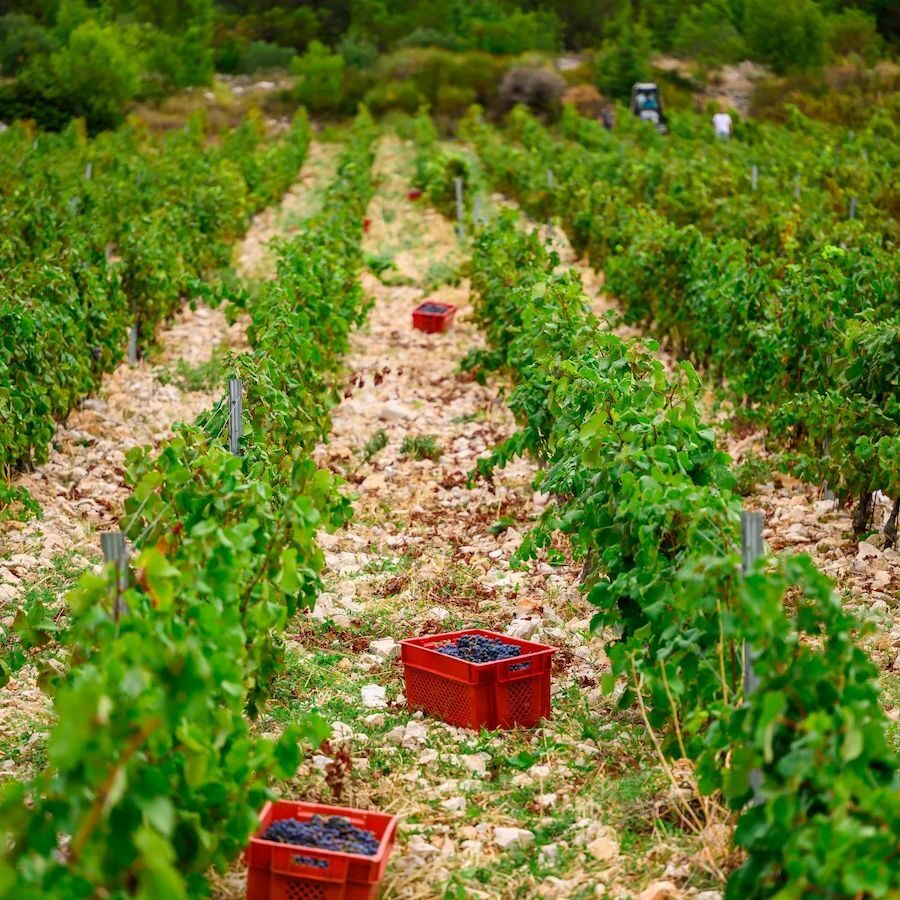
The great-grandfather of the current generation of the Štimac family planted the family’s first vineyards around the start of the 20th century.
They never even considered designing the vineyards to be anything other than authentically original, even up to the smallest detail, and the family also applied organic cultivation to their vineyards, where abundant growth of wild flora is permitted.
19. Saint Hills Winery (Komarna Wine Region)
The Saint Hills Winery was constructed with a love of winemaking and a reverence for the environment. They are connected in a patchwork of love, hard effort, and respect by the renowned communities of Dingač, Komarna, and Radovani in lovely Dalmatia and Istria.
The most important wines they produce are a Malvasia Istriana and Chardonnay blend, a red from Plavac Mali and Saints Hills 2008 Dingač, and finally, the white “Nevina.” The Saints Hills Dingač has been aged in a barrel for almost two years.
In addition to Croatia and Serbia, their products are distributed in the United Kingdom and the United States.
Visit from 11 a.m. to 5 p.m. by appointment
Facebook | ph: +385 (0) 15 508 050
20. Degarra Winery, Zadar (Zadar Wine Region)
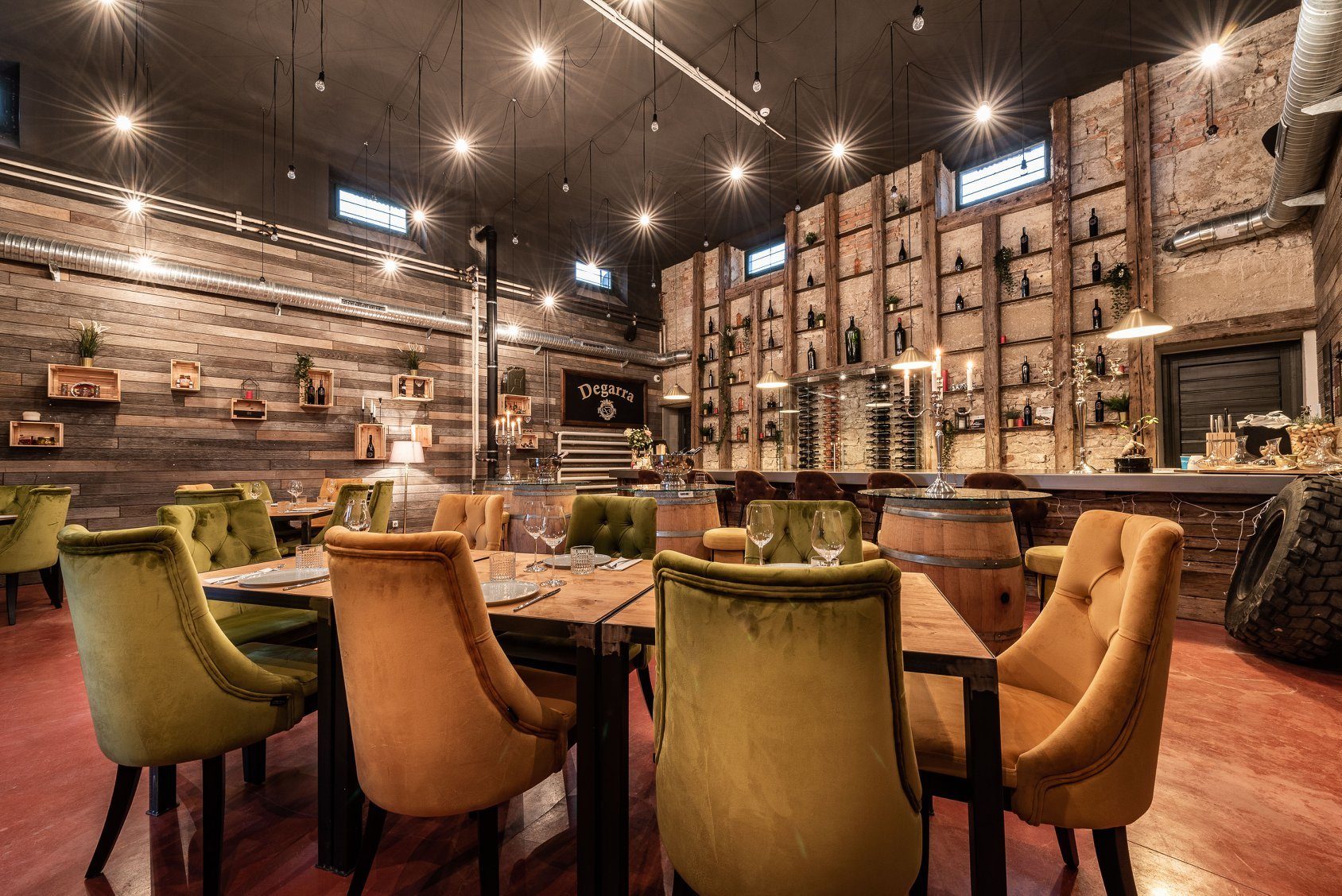
Our wine tour of Dalmatia starts on its northern end. The Degarra winery is a small but exquisite winery located in the city of Zadar.
Although white wines are their specialty, they also make rosé and red wines. Mind you, this is a tiny winery, a project started by just a few wine enthusiasts that initially yielded only about 8000 bottles.
However, their wines soon became a huge hit, and the demand multiplied several times. Today, they produce 30,000 bottles a year and are very reluctant to increase that any further.
It would diminish the quality, they say, which is of the highest order. So, when in Zadar, look this very intriguing establishment up, and if they have any bottles available, you’re in for a serious treat.
Please pay special attention to their Pošip (a variety of white grape indigenous to Croatia) and Bomary, an exceptional and very exciting blend of several types of red grapes, which has caused quite a stir on the local oenological scene.
Without question, this is a great way to start your vacation in Dalmatia.
21. Fiolic Winery (Zadar Wine Region)
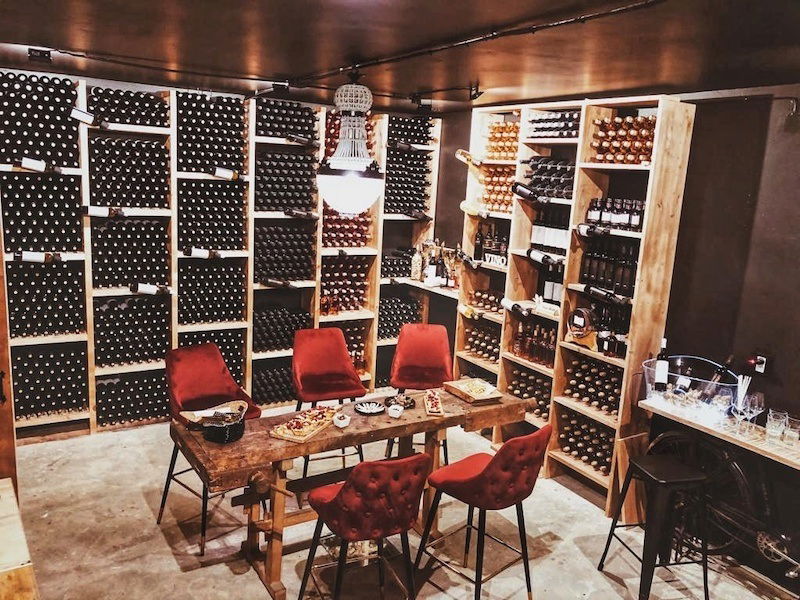
In 2006, the Fiolić began “experimenting” with winemaking in the basement of their home.
The manufacture was initially made in tiny quantities and exclusively for personal use. However, the family decided to start their own winery in 2016 after being wildly successful in many competitions for excellence in quality and winemaking zeal.
The Fiolić winery currently produces 20.000 bottles of wine.
22. Skaulj (Zadar Wine Region)
The first ecological winery in Croatia is situated in the town of Nadin, in the center of Ravni Kotari, and produces wine and grapes in accordance with rigorous environmental standards.
Nadin is also known as the most environmentally friendly location in Croatia because ecological stations manage 90% of its 600 ha of grapes.
23. Kraljevski (Zadar Wine Region)

The vineyards were built in harsh conditions on the scenic hillsides above Petrčane and Punta Skala, on the rocky soil with an ideal slope towards the southwest and with a mixture of warm sea air and a breeze coming from the Velebit Mountain.
Due to its unique microclimate, its location by the sea, and a full day of direct sun exposure, the stone vines’ premium fruit and wines have great flavors.
24. Testament Winery (Sibenik Wine Region)
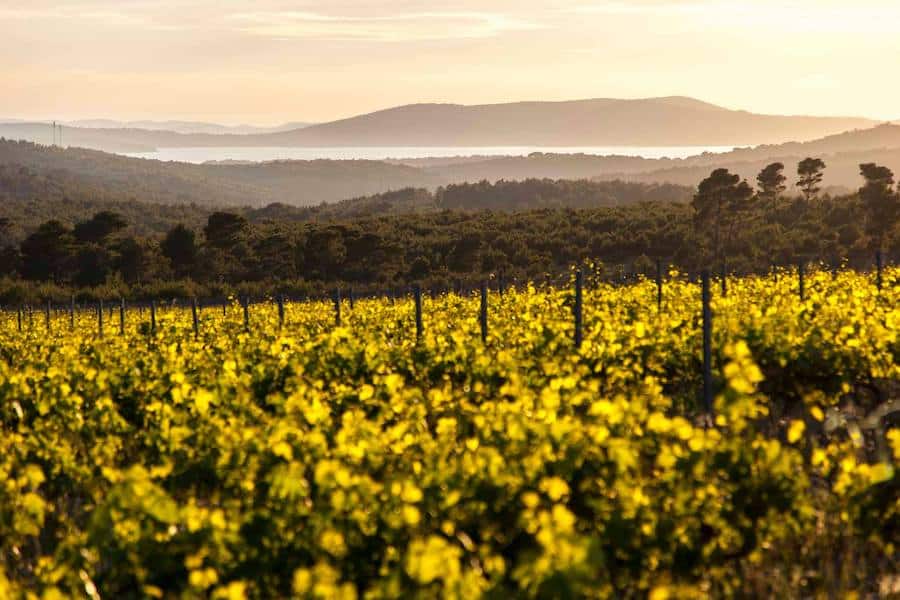
The vineyards of the Testament winery are situated in the Northern Dalmatian wine-growing region, close to the historic town of Šibenik.
The grapes have consistently struggled to grow due to the unique environment and the peculiarities of the soil. The wines’ strong and deep colors, as well as their robust tastes and aromas, reflect this centuries-old rite of survival.
25. Rak Winery (Zadar Wine Region)
Rak Winery focuses on the production of grapes and wine in Dubrava and takes pleasure in cultivating and producing two indigenous wine varieties: Babić and Maraština.
Since 1960, the family has been engaged in viticulture and viniculture. While maintaining modern standards in the fields of raising grapevines and making high-quality wine, they do so while upholding tradition.
26. Sladic Winery (Zadar Wine Region)
All 15,000 grapes owned by the Sladic family, which are close to the Krka National Park, are cared for with a lot of love and harvested by hand.
The family’s winery offers the ultimate weekend getaway and a doorway to an entirely new world thanks to its fantastic location and outstanding wine list.
27. Ante Sladic Winery (Zadar Wine Region)
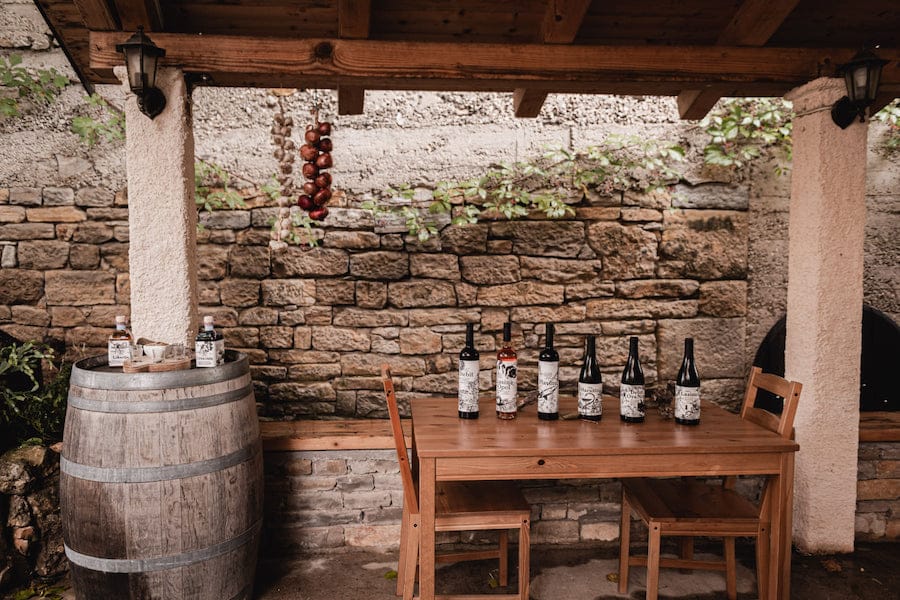
Ante Sladic is a family-owned winery with a rich history of growing grapes and producing wine.
They work to produce extraordinary quality wines using only indigenous varietals, which the family wholeheartedly believes, under the direction of the vineyard manager and winemaker Ante Sladic, who took over from the winery’s founder, Marinko Sladic.
28. Bibich Winery (Zadar Wine Region)
A family-run “boutique” winery from Skradin, close to Zadar, The Bibich Winery has been making wine for decades with a concentration on regional grapes.
The Bibich winery always uses only the purest, most natural grapes. The vineyards are treated traditionally with little addition of artificial fertilizers or protective agents.
Visit by appointment only.

29. Boškinac Winery (Dalmatian Islands Wine Region)
The Boškinac hotel, restaurant, and winery are located on the Island of Pag, which is one of the biggest islands in Dalmatia. Although the winery was built only a few years ago, they have already received awards for the Boškinac 2006, Boškinac 2007, and Boškinac 2009.
The winery also has a great wine tasting room.
The winery’s most famous wine is the Gegić, a dry white wines made of the grape variety of the same name, which is native only to the island of Pag and its surroundings. Besides this, Boškinac produces cuvees, both red (Boškinac Cuvee) and white (Boškinac Grande Cuvée), and another white wine, called OCU, blended only from local varieties.
Be sure to pair a Boškinac wine with the world-famous cheese Paški sir, also made exclusively on Pag.
Visit by appointment only
Facebook | Novaljsko Poljebb, 53291 Novalja |e-mail | +385 (0) 53 663 500
30. Katunar Winery (Dalmatian Islands Wine Region)
The Katunar is a family winery situated on the island of Krk.
The small winery produces Kurykta Nigra, Žlahtina Katunar and Katunar Barrique, Chardonnay Katunar, and even sparkling wine Porin and Biser Mora.
Their wines are primarily produced from Debit and sparkling wine made of a debit blend. Žlahtina is a local grape variety which is indigenous to Vrbnik.
Despite being a family-run business owned by the brothers Anton and Ivan Katunar, the Katunar winery has also earned a name beyond Croatia’s borders.
Visit by appointment only.
Facebook | Sv. Nedilja bb, 51 516 Vrbnik | + 385 (0) 51 857 393
31. Ahearne Vino, Hvar (Dalmatian Islands Wine Region)
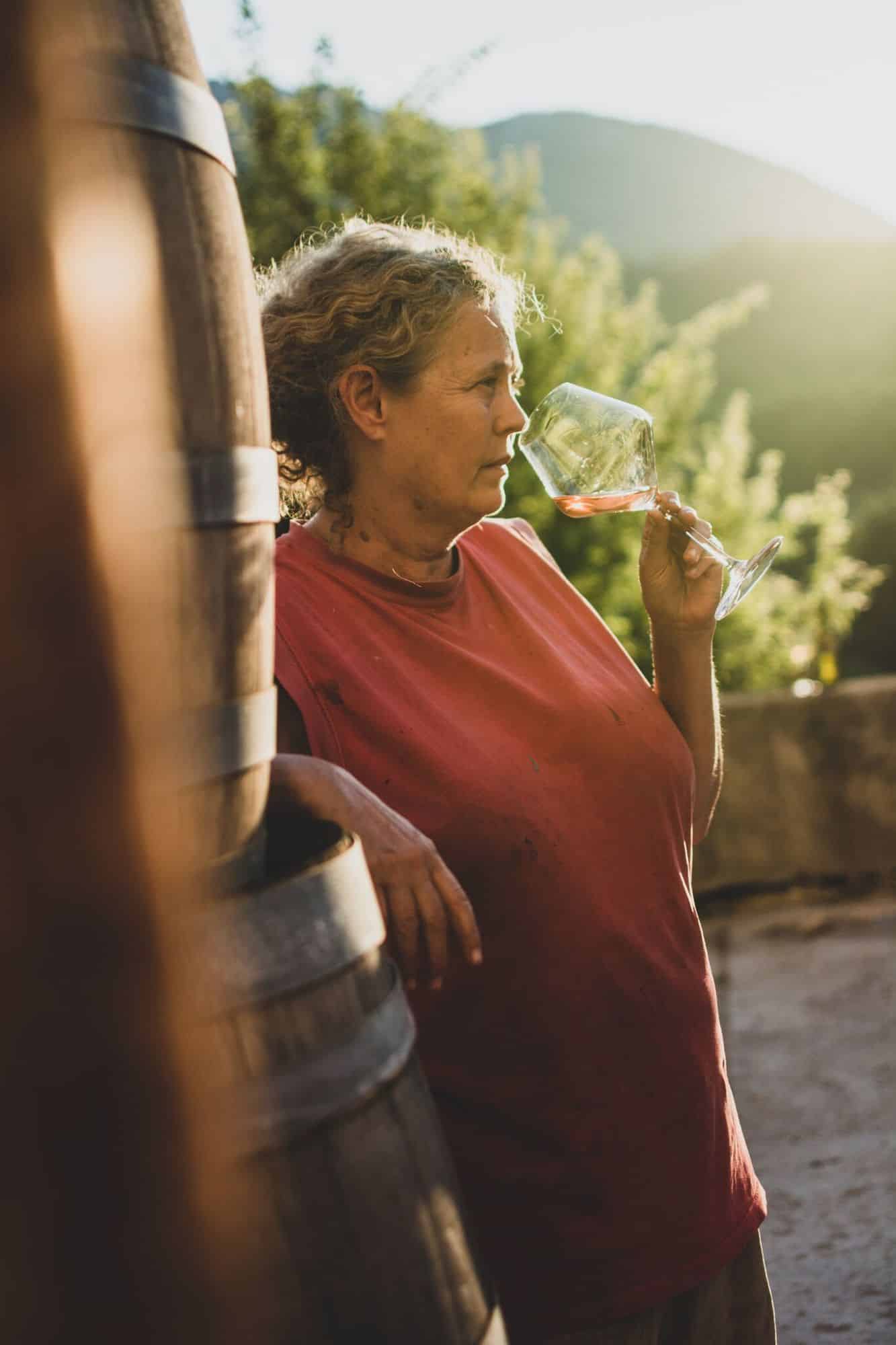
If you’re visiting the islands around Split, make sure you pop over to Hvar. That’s where Joanna Ahearne has set up her base of operations, which has resulted in some genuinely extraordinary products – we daresay she’s a master of wine!
First and foremost, her Wild Skins is a macerated white wine composed of three local grape varieties. This has resulted in a complex and very intriguing aroma you won’t find anywhere else in this part of the world (and we seriously doubt anywhere else, for that matter).
Furthermore, she also makes a rosé of drnekuša, a scarce grape variety – drnekuša can be found ONLY on just over one hectare of land on Hvar if you want to taste something that literally cannot be found anywhere else in the world; this is it.
Apart from these two, Ahearne also produces excellent Plavac Mali wines, which are also of the highest quality.
Given Joanna’s long career in the world of enology and the fact that she has the prestigious title of Master of Wine (the only person in Croatia with one!), a visit to her base of operations on Hvar is something no wine lover will want to miss.
32. Stina Winery (Dalmatian Islands Wine Region)
True representations of indigenous grapes and of Dalmatia as a whole can be found in Stina’s wines.
An authentic taste of the Adriatic Coast may be found in robust red wines with the well-known flavors of tart cherries and Mediterranean herbs, as well as gorgeously crisp white wines with a strong structure, great minerality, and saline notes.
Open each evening.
Facebook | Riva 16, Bol Town | +385 (0) 21 306 220
33. Bire Winery (Dalmatian Islands Wine Region)
On the island of Korcula, in Lumbarda, is where you can find Bire Winery.
It is most well-known for its native white Grk wine. The winery also makes Plavac and Rose in addition to Grk.
Winemaker Frano Milina, who owns Bire Winery, has renovated traditional terraced vines that are more than a century old.
Additionally, it is Korcula’s first ecological vineyard.
34. Vina Tomic (Dalmatian Islands Wine Region)
On the Island of Hvar, in the town of Jelsa in Dalmatia, you can find the Tomić winery. They produce an enormous amount of wine, more than 130,000 bottles a year.
The Tomić winery produces wine from Plavac Mali and Plavac Veliki for the red varieties and Pošip, Bogdanuša, Maraština, and Prč for their white wines. You can also find Cabernet Sauvignon, Cabernet Franc, Merlot, Yellow Muscat, or Drnekušica in their repertoire.
They also produce Prošek, which is a local, sweet dessert wine made from dried grapes.
If you visit the winery, it’s very likely that the owner himself, Sebastijan Tomić, or his father, Andro Tomić, the famous oenologist, will be your guide.
Visit by appointment only
Facebook |Jelsa, Island Hvar | + 385 (0) 49 340 466
35. Crivik (Konavle Wine Region)
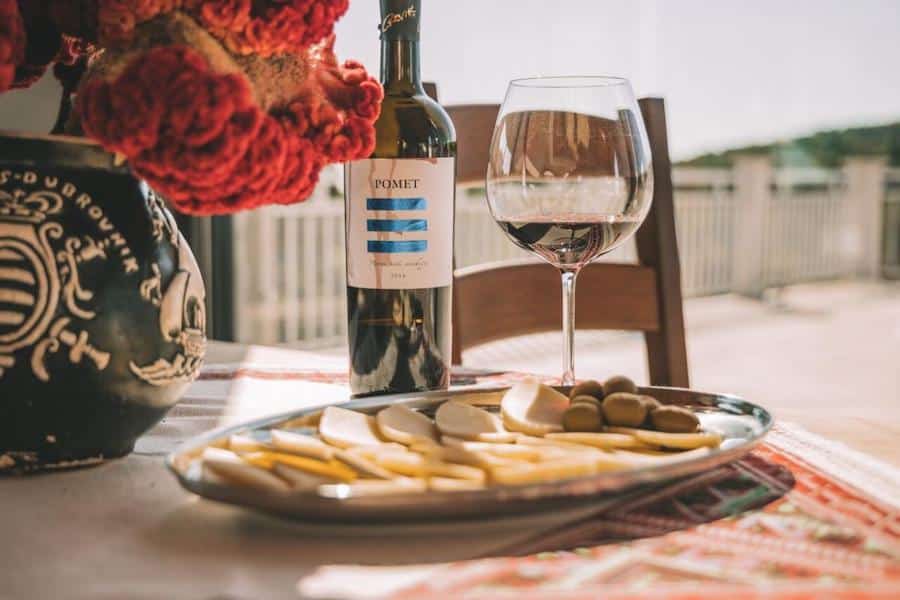
The vineyard is situated in the lovely village of Komaji, which is nestled in a forest on the hills between Konavle field and the sea in Konavle, a green haven not far from Dubrovnik.
Son Petar, who represents the fourth generation, enrolled in the Zagreb Faculty of Agriculture in 2006 and introduced improvements in wine production and promoted rebranding, which resulted in winning prizes at international competitions.
36. Karaman (Konavle Wine Region)
Due to its unique needs and the Homeland War, Malvasia of Dubrovnik was suppressed at the start of Croatian independence and was on the approach of extinction. Owner and oenologist Niko Karaman was raised in a family with a long history of wine production.
He prevented the extinction of this grape at the conclusion of the Homeland War. He planted his first Malvasia of Dubrovnik vineyard using the three healthy wines he had discovered.
Niko restored its long-forgotten and uprooted throne from the era of the Dubrovnik Republic and bestowed upon it the title of Malvasia World Champion.
Pelješac Wineries
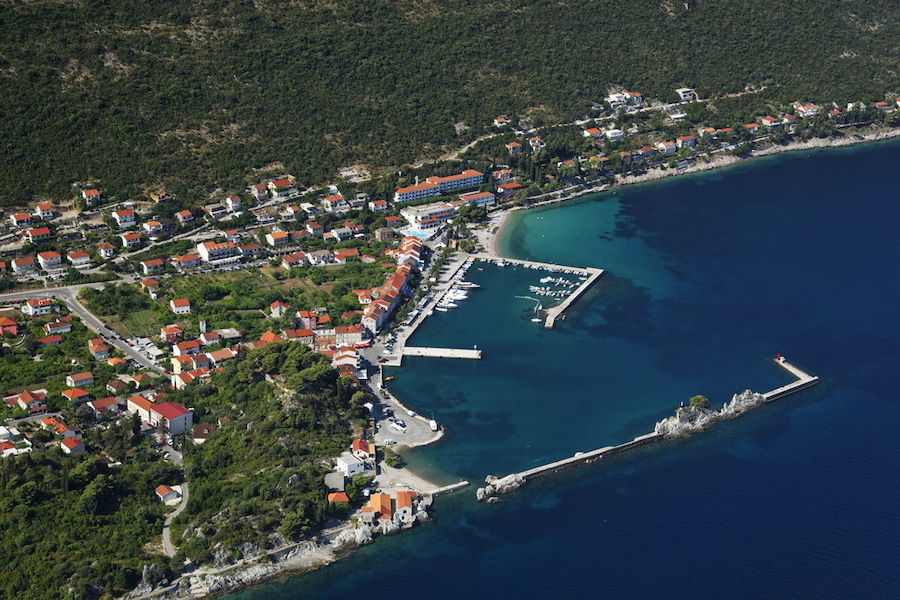
Many of the names mentioned in the last paragraph are closely related to the peninsula known as Pelješac. This is THE place for excellent wine in Dalmatia (and beyond) and a great stop if you’re traveling to the Croatian jewel of Dubrovnik, for example.
The Dingač mentioned above, and Postup are appellations on this very peninsula. The red wines produced in the area are considered to be the best not just in the country but also in the region.
Considering this area’s reputation, it would really be a shame not to stop for a tour of the local wineries if you’re in the neighborhood.
There are about 250 wineries in Pelješac alone, which can give you a pretty good idea of how important wine is to the people living here.
This also means you need to know which ones you should visit, so here’s a short overview of the best and most interesting wineries in Pelješac.
37. Vicelić Winery
Although not very big, this winery produces some incredibly impressive wines. The best proof is that their Dingač from 2011 was the first Croatian wine chosen by Berry Bros & Rudd, the British Royal Family’s official supplier.
You can’t get a much better recommendation than that!
38. Grgić Hills Winery – Pelješac Peninsula
The Grgić Hills winery is located close to Trstenik, on the Peljesac peninsula, in Southern Dalmatia. It was established in 1996 by Croatian-born Miljenko “Mike” Grgich and his daughter, Violet Grgich.
They make Croatia’s most famous varietals, Plavac Mali and Pošip. Mike Grgich uses the same methods and techniques as in his American winery in California.
Grgić’s Plavac Mali and Pošip are a little more expensive than others, but most of the most well-known and famous restaurants put these Croatia wines on their wine list.
The winery is attentive to ecological sustainability, uses no artificial fertilizers, pesticides, or herbicides, and harnesses solar power.
Open from 10 a.m. to 5 p.m.
facebook | Trstenik, Poluotok Peljesac |+385 (0) 20 748 090
39. Korta Katarina Winery
The Korta Katarina winery is found in Orebich4, near Peljesac in Southern Croatia, with its villa called “Rivijera Orebic.” They use the Plavac Mali grape to produce one of their premium Croatian quality and award-winning wines, the KK Plavac Mali 2007.
The winery’s golden-greenish white wine, the KK Posip 2008, has won a vast amount of national and international awards, as well. The Reuben’s Reserve Plavac Mali 2006, Korta Katarina’s third Premium Quality Wine, is produced by aging Plavac Mali in a French oak barrel and then the bottle for an equal amount of time.
The winery, which introduced its first vintage in 2006, offers you various tours, cultural programs, and culinary events.
Visit by appointment only.
Facebook | “Riviera Orebic” Bana J. Jelacica 3 20250 Orebic, Croatia |+385 (0) 20 713 817
40. Edivo Underwater Winery – Pelješac Peninsula
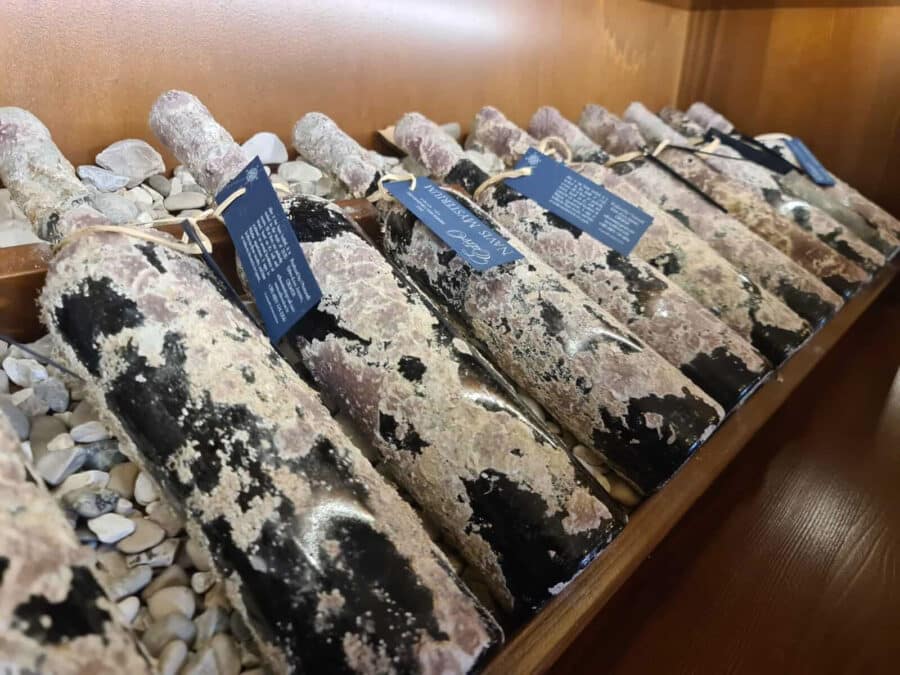
Yes, you read that right! The beautiful Pelješac Peninsula even has its own underwater winery.
Located in the small town of Drače, between Orebić and Ston, Edivo Vina is the first underwater winery in Croatia. It stores its wines in amphorae beneath the Adriatic Sea, where the cooling effect of the water provides ideal wine storage conditions.
You can tour these underwater wine cellars on a scuba diving tour with a PADI-certified guide, making it a unique destination for wine lovers. You do need your own diving license, though, in order to grab your own wine bottle from the bottom of the sea.
Tours occur once a day in winter and twice a day in the summertime.
Additionally, Edivo Vina also has an above-ground winery where you can taste their wines.
41. Miloš Winery
We have already mentioned their Stagnum, but this winery deserves the utmost respect because of the tradition they bring to the table (no pun intended).
You see, the Miloš family has been in the winemaking business for generations, and during that time, little has changed in terms of how they produce wine.
Oh, and they also make some excellent olive oil, so if you get a chance to taste some of their products, for heaven’s sake, don’t say no.
Open daily, 8 a.m. to 8 p.m.
Ponikve 15, 20230 Ston |385 (0) 20 753 098
42. Matuško Winery
There are several reasons to visit this winery.
The first is that they have some great wine, obviously, but they also have a wide array of different products.
Furthermore, the winery itself is exceptionally beautiful, with an incredible underground wine cellar and an awe-inspiring tasting room.
Visiting this place will pay off in so many different ways.
Best Croatian Wineries In Eastern Croatia & Continental Croatia
Croatia’s third central wine region is continental Croatia (the inland area around Zagreb) and eastern Croatia (the Slavonia region).
This large region encompasses the Croatian Highlands, a series of rolling hills and mountain ridges with a cool climate. The eastern part of the region is mainly flat agricultural land and river valleys, including the Danube River valley.
While the valleys are used for other agricultural production, the surrounding hills are ideal for growing grapes.
Continental Croatia is the place to go for sparkling wines in Croatia, while several white wines are also produced here.
Star varieties found in continental Croatia’s hills include graševina, sauvignon blanc, furmint, riesling, chardonnay, kraljevina, pinot grigio and traminac (better known as gewürztraminer). Additionally, you can also find some red varieties here, including pinot noir, cabernet sauvignon, merlot and frankovka.
43. Vuglec Breg Winery
We decided to dine in the hotel restaurant on our first evening in Marija Bistrica at Bluesun Hotel Kaj. The waiter kindly asked us if we would like an Aperitif, and he recommended a glass of local sparkling wine called Baronial.
Being supporters of all things local, we gave it a try and discovered it was fantastic. I have to admit that I haven’t tried many Croatian Sparkling wines, but this was impressive!
The waiter advised us that this sparkling was from a local producer called Vuglec Breg. We loved that sparking so much, it inspired us to go and track down Vuglec Breg and visit the winery firsthand.
Perched on top of a hill in a town called Skarecivo, in Krapina, sits Vuglec Breg. The winery overlooks its 4-hectare vineyard, which is absolutely stunning.
We decided to take a seat on the balcony and stay for lunch. We started our meal with a glass of the Baronial, which again is outstanding.
It’s produced using the traditional champagne method, fermented and matured in the bottle. The wine is a blend of chardonnay with a little Grasevina and is refreshing with a fruity aroma.
In between sipping on my sparkling and waiting for lunch, I took the baby donkey, and to play with the miniature horses they have on the property. I’ve never seen a miniature horse up close and personal. I found them very cute and friendly, but the Baby Donkey was suspicious and wouldn’t get too close.
Our lunch consisted of the famous Zagorje soup and frog legs, followed by a roast goose.
Mrs. CtD has a glass of the Sauvignon Blanc, while I had the Pasion Cuvee, which is a blend of Frankovka, Pinot Noir, and Cabernet Sauvignon. This red blend was paired delightfully with the roast goose.
During lunch, we got talking with the waiter, and we told him about trying the sparkling in a restaurant and making our way to buy some of the sparkling; he kindly invited us to go and visit their wine cellar so he could show us around and let us sample the wines we had not yet tried.
He was so happy that we showed an interest in his product. These are the things I love about Croatia.
Needless to say, I bought a dozen bottles of wine to share with the family back in Dalmatia.
44. Galic Winery, Kutjevo
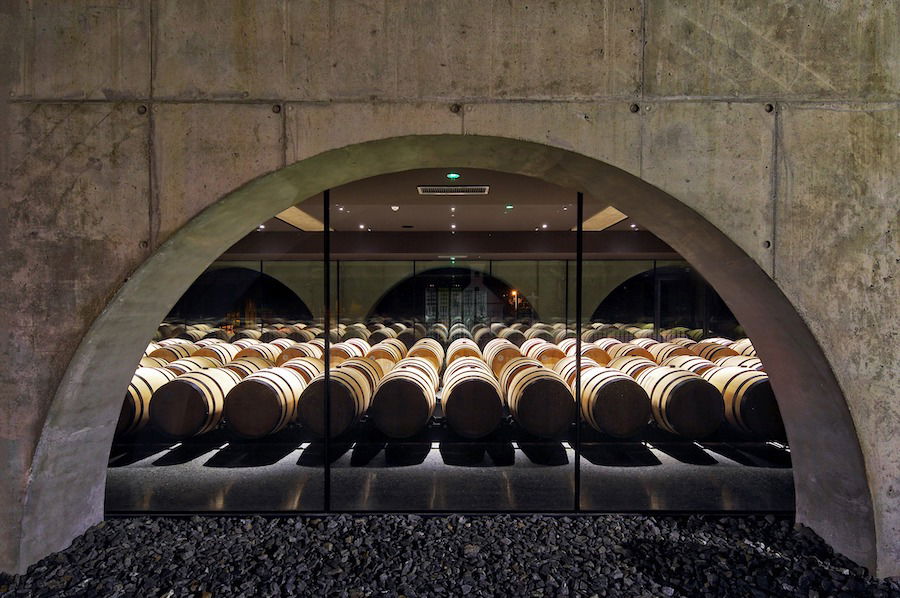
The Galić winery makes its famous wines in the Kutjevo valley, which is often regarded as the wine capital of continental Croatia.
It produces wine from different grape varieties, but the graševina, a superior quality dry white wine, is a must try. It shows the pure characteristics of Graševina and, as it is said, the essence of the Kutjevo region.
They also make semi-sweet white wine, called graševina kasna berba and chardonnay, as well as red sauvignon and even rosé.
You may want to become a member of their wine club to receive excellent discounts and enjoy other valuable benefits.
Visit by appointment only.
Facebook | Lukač bb, 34335 Vetovo | +385 (0) 934 440 850
45. Krauthaker Winery, Kutjevo
The Krauthaker winery is situated in Kutjevo, a wine-producing area on the Croatian mountain Krndija’s southern slopes. Vlado Krauthaker, an oenologist with a BA in agronomy, started the winery.
The winery began making wine with just 1 hectare of vineyards, but by 2010, it had expanded to 32 hectares. The winery collaborates with other owners to manage an additional 68 hectares of vineyards.
Some portions of the wine cellars were created by the Cistercians in their original shape in 1232, despite building a sizable manor house close to the vaults’ underground passageways.
Visit by appointment only Facebook |Ivana Jambrovica 6, 34340 Kutjevo |e-mail |+385 (0) 24 315 000
46. Sontacchi Winery, Kutjevo & Venje
Tomaso Sontacchi began working as a vineyard estate manager at the renowned Zdenko Turković Estate in the City of Kutjevo in 1900, which is when the winery’s history began.
These days, predominantly red grape types such as Graševina, Muller Thurgau, Pinot Noir, Cabernet Franc, Cabernet Sauvignon, and Portugieser are grown in the vineyards in Venje and Kutjevo.
The winery is located in a former brick masonry stable in Graševina plaza in the center of Kutjevo.
47. Vostinic Klasnic Winery, Graberje Ivanicko
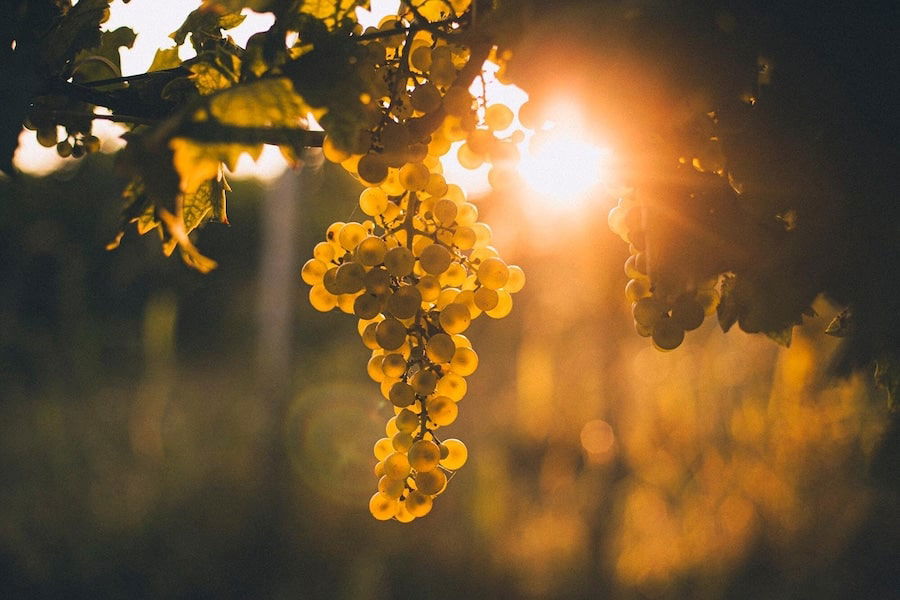
The Voštinić – Klasnić Winery has been there since 1936, but the two owners just started taking their business seriously 15 years ago. They carry on the “old-new” path of this amazing industry of viticulture and winemaking with their youth, vitality, enthusiasm, defiance, and desire to carry on their great-grandfather’s history.
Their primary motivation and source of pride is Škrlet, a variety that, thanks to the tremendous effort of the viticulture profession, has been revitalized and is now forging a distinguished career in the Croatian wine scene.
48. Josic Winery, Baranja
The Josic Winery is situated in Baranja, a part of the Knezevi Vinogradi municipality. The Josic family of Osijek purchased a vintage wine cellar from 1935 to 1999, which marked the start of the winery’s current phase.
Modern technology has been installed in the basement while maintaining its original appearance. The family also acquired 1.6 hectares of aged vineyards at the same time.
The numerous prizes and medals that Josic wine has garnered attest to its high quality.
A tasting area and restaurant are located inside the winery and are both designed traditionally.
49. Tomac Winery, Zagreb
Tomac Winery, owned by Tomislav Tomac, is located close to Jastrebarsko. The family has a 200-year history of winemaking, with the most famous wines they produce being a riesling and chardonnay.
The winery is well-known for its still wines fermented and aged in clay amphorae. This method oxidizes the wine very uniquely.
Their most famous wine, the Riesling ’09, is fermented and aged in a clay amphora for six months before 18 months in oak barrels and an additional year of bottle aging. It is no surprise that this wine was awarded the “Best White Wine of Croatia” in 2012.
Tomac’s sparkling wines are also considered to be of very high quality.
Visit by appointment only.
Donja Reka 5, 10450 Jastrebarsko, Croatia | +385 (0) 1 6282 617
50. Korak Winery, Plešivica

Korak winery is a family-run affair in the beautiful Plešivica region. This is an excellent winery for those who aren’t advanced in winetasting and want to try it for the first time.
This particular winery is famous for Chardonnay, Pinot Noir, Champagne, Riesling, and Sauvignon Blanc.
Having been recently renovated, this winery is a modern option, and it has several packages you can choose from to explore the estate and different dry wines.
A picnic for two is a great option here, and you’ll have the very best scenery to enjoy your food!
51. Bodren Winery
The Bodren winery is located on the hills of Hrvatsko Zagorje, in a region north of Zagreb. The winery is most famous for its ice-harvested wines.
They’ve been awarded six Gold, eight Silver, and six Bronze medals during the last five years at London’s Decanter World Wine Awards. More recently, in the International Wine Challenge 2014, regarded by many as the world’s most influential wine competition, Bodren Icewine 2011 won a Gold Medal, along with other prestigious prizes.
Besides this widely appreciated wine, the Bodren winery’s famous wines include Chardonnay, Riesling, and Pinot Gris.
Visit by appointment only.
Facebook | Rusnica 64, 49231 Hum na Sutli |+ 385 (0) 49 340 466
52. Bolfan Winery
The Bolfan winery, located in the village of Hrascina, in the region of Zagorje-Međimurje, makes its wines with a completely natural method of vine nurturing.
The most well-known and award-winning wines of Bolfan are the dry or semi-dry riesling, the dry Sauvignon, and the dry, red Pinot Gris, but they produce Yellow Muscat and Pinot Noir, as well. Along with many silver and bronze awards, the Bolfan winery won a Gold medal with its Rajnski Rizling 2008 in the Muvina International Wine Contest, held in Slovakia in 2010.
The winery welcomes you with a wine tasting room, a seminar hall, a restaurant, and a souvenir shop.
Varied working hours – call to check before you plan a trip.
Facebook | Gornjaki 56, 49283 Hraščina, Croatia |+385 (0)49 458 287
53. Winery Jagunić, Plešivica
If you want amazing views, this is the one for you! Located in Plešivica, this small and welcoming winery will make you feel like you’re part of the family.
There is a lot of history here as this winery began bottling wines before most others in the region.
They have a vast menu of different wines to taste, including local and international options. The package includes tasting a huge six wines and cheese and meat snacks.
54. Ivančić Griffin Winery, Plešivica
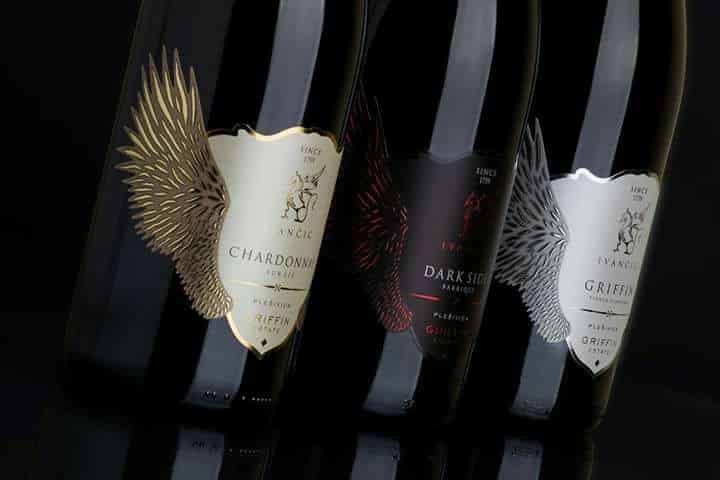
This is a winery with a difference because not only can you tour the area and explore the scenery, but the owner will also show you how to make wine!
You’ll also find a variety of different wines here, including some lesser-known ones, such as Rizvanac and Blauer Portugieser.
This is a smaller winery, so don’t expect crowds or a huge amount of marketing, but its intimacy is what makes it stand apart.
Tours last for two hours, and you get a variety of snacks to enjoy.
55. Sember Winery, Pavlovčani
Sember Winery is a family-run winery that will help you learn more about wine than you ever thought possible while tasting some truly delicious samples for yourself. With both sparkling and still varieties of wine, you can also taste wine made in large clay vessels, with the wine left to ferment for a long time – it’s strong!
Sember Winery has a large tasting package that includes snacks and tasting five different wines.
Want Even More Croatian Wine?
Then check out these other top wineries:
- Suhapunta
- Zlatan Otok
- Ilocki
- Meneghetti Winery
Move This Adventure To Your Inbox & Get An Instant Freebie

No spam. Unsubscribe at any time.
Final Word On Outstanding Wineries To Visit In Croatia
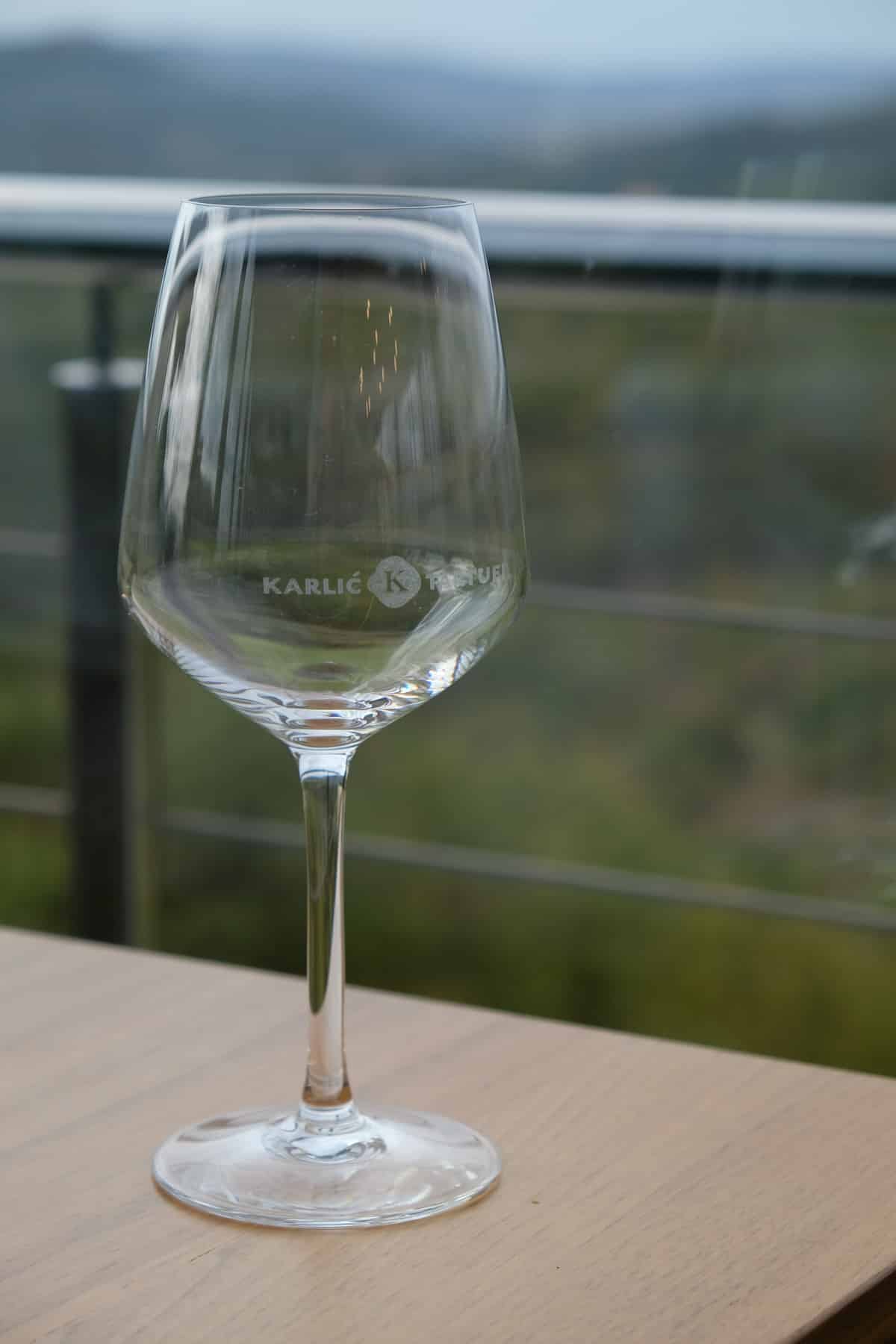
Look, wherever you end up in Croatia, you’re gonna stumble upon some amazing wines – we’re talking whites, reds, rosés, you name it. The cool part? Croatia’s got these unique grape varieties you won’t find anywhere else.
So, on your wine tour, you’re in for some real one-of-a-kind sips!
Wine has been a big deal here since the olden days, thanks to pretty much perfect wine-growing conditions. These days, it’s not just a job; it’s a passion for loads of folks.
And hey, we’ve got some legit wine pros here, too (shoutout to Jo, the Master of Wine). So you’re getting top-shelf stuff, the kind that graces the tables of fancy restaurants worldwide.
In short, a winetasting trip to Croatia is the ultimate adult summer vacation. It’s not just about the wine; it’s the whole vibe – those postcard-perfect towns and villages, the stunning sea, killer food, and, of course, fantastic wines.
Cheers to that!
Don’t hesitate to visit Croatia and prepare to enjoy premium wines.
Note: Thanks to Anca from One Day Itinerary for giving us some of the details on these wineries.


Went with my parents as a treat for a very special occasion. I have been organising this trip for a long time. Both my parents being winemakers for over 60 years. We were very interested mainly in the wine tasting, not so much in the food. We were in a winery offering wine tasting after all! The staff was incredibly rude and unhelpful, not willing to talk to us about the wines, the winery or wine production at all or explaining to us of how the wine tasting here works and how we choose the wines. We were Completely ignored. They even refused to give my mum a glass! The wines were literally undrinkable, being poured from bottles that have been open for a long while. Most of the white wines were getting into the stage of a vinegar. Really dreadful traumatic unpleasant experience, I was on the verge of crying.
We have the tapas platter and I have to say it was absolutely outstanding. Compliments to the chef. Obviously the food here is amazing. And believe me, I know a good food as we owe a restaurant and my husband is a chef! Such a shame it’s being advertised as a winery and not a restaurant. Very expensive as well, small glass of wine €15! We got a whole bottle of a good pleasant drinkable interesting wine in a nearby prsuterie for that.
The sommeliers at Bibich should be ashamed as the customer service here is non existent. You have ruined our evening!
Avoid the wines here at all cost, they are a complete garbage. Just have a dinner here with a bottle of beer perhaps.
For an exceptional wine tasting experience go to Baraka winery in Sibenik instead.
Ohhh no Magda, I am so sorry you had such a dreadful experience. That sounds far below what anyone I know has experienced. I hope that you had many other great experiences to be able to forget this one at Bibich.
The depth of information you’ve provided is impressive. I feel like I’ve gained a thorough understanding of all things wine!
I need a very good recipe for wine.
Open the bottle.
Pour in your glass.
Drink.
Repeat till the bottle is empty.